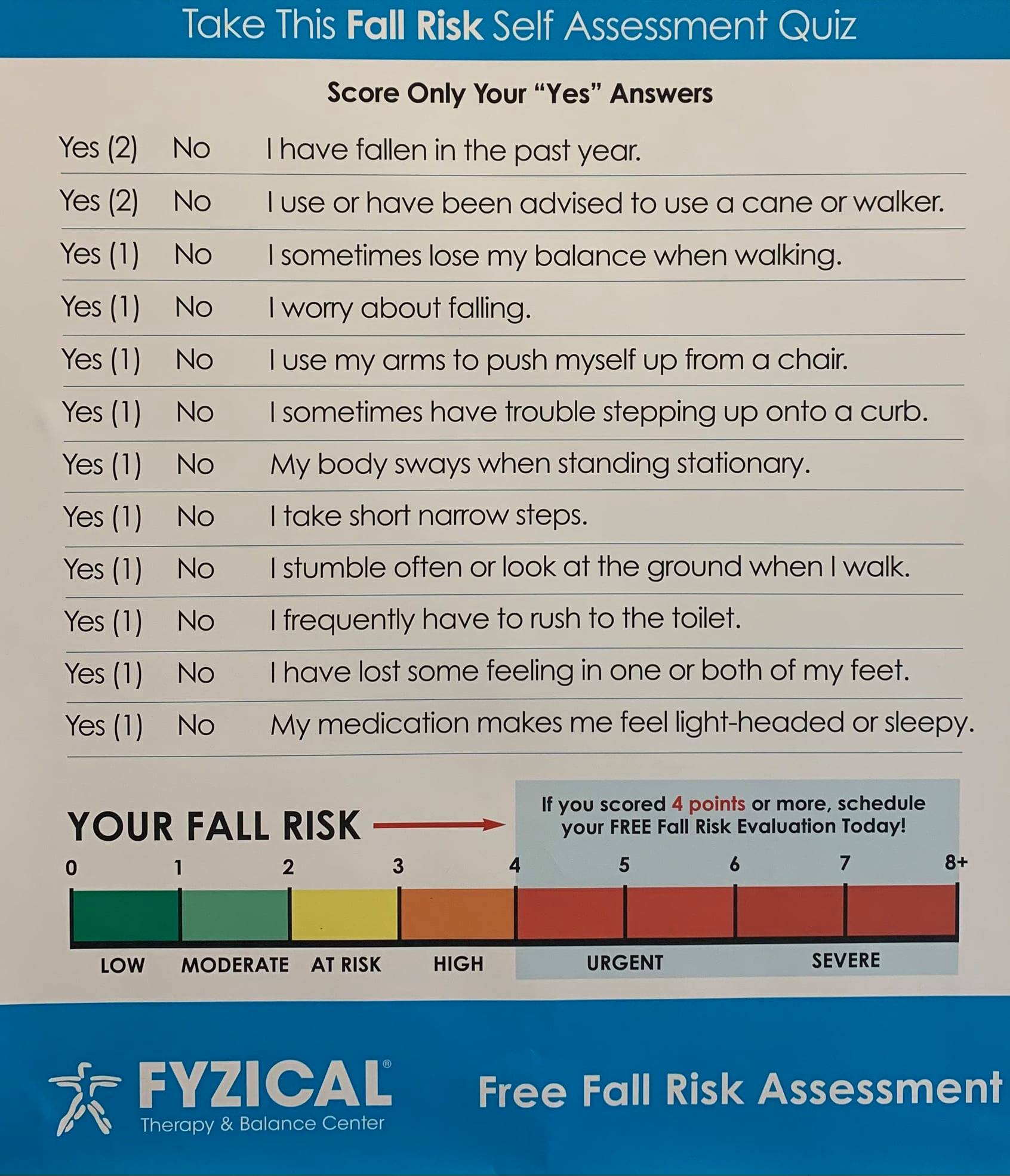The Ultimate Guide To Dementia Fall Risk
The Ultimate Guide To Dementia Fall Risk
Blog Article
The Main Principles Of Dementia Fall Risk
Table of ContentsSome Known Facts About Dementia Fall Risk.A Biased View of Dementia Fall RiskDementia Fall Risk Things To Know Before You Get ThisDementia Fall Risk Fundamentals ExplainedThe Definitive Guide to Dementia Fall Risk
In the community, poor street lights or unsafe creeks and garbage dumps may additionally trigger accidents. Autumns Risk Assessment Tool (FRAT) is a 4-item falls-risk testing tool for sub-acute and residential treatment. The FRAT has three areas: fall danger status, threat element list, and action strategy. A Fall Threat Condition includes data concerning history of current drops, medicines, emotional and cognitive standing of the individual.If the individual ratings on a threat factor, the corresponding number of points are counted to the individual's loss risk score in the box to the far. If a patient's fall danger rating completes five or higher, the individual is at high risk for falls. If the individual ratings only 4 points or lower, they are still at some danger of dropping, and the registered nurse needs to use their finest professional assessment to take care of all fall risk factors as component of an alternative treatment strategy.
These basic strategies, in basic, help create a risk-free environment that minimizes unexpected falls and marks core preventive actions for all individuals. Indications are essential for individuals at risk for drops.
Dementia Fall Risk for Dummies
Wristbands should include the client's last and very first name, date of birth, and NHS number in the UK. Just red shade should be used to signal special client status.
Items that are as well far may require the client to reach out or ambulate unnecessarily and can potentially be a risk or add to falls. Helps prevent the patient from going out of bed without any assistance. Registered nurses reply to fallers' telephone call lights more promptly than they do to lights launched by non-fallers.
Visual problems can considerably trigger falls. Maintaining the beds closer to the floor lowers the danger of falls and significant injury. Putting the mattress on the flooring significantly lowers autumn threat in some health care settings.
Unknown Facts About Dementia Fall Risk
Individuals that are tall and with weak leg muscle mass that try to sit on the bed from a standing setting are likely to drop onto the bed because it's too reduced for them to decrease themselves securely. Also, if a high person attempts to get up from a reduced bed without aid, the click here for more info patient is likely to drop back down onto the bed or miss out on the bed and drop onto the floor.
They're designed to promote timely rescue, not to avoid falls from bed. Audible alarm systems can additionally advise the person not to rise alone. Making use of alarms can also be an alternative to physical restrictions. Apart from bed alarms, increased supervision for high-risk individuals additionally might aid prevent drops.

Clients with a shuffling stride rise autumn chances drastically. To decrease fall threat, shoes ought to be with a little to no heel, thin soles with slip-resistant step, and sustain the ankles.
Things about Dementia Fall Risk
Clients, specifically older grownups, have actually reduced visual ability. Illumination an unfamiliar environment helps boost visibility if the person should rise in the evening. In a research study, homes with ample illumination record less falls (Ramulu et al., 2021). Enhancement in lights in your home might lower fall rates in older grownups (Dementia Fall Risk). The usage of gait belts by all health and wellness treatment suppliers can advertise safety when helping people with transfers from bed to chair.

Sitters are effective for guaranteeing a safe, secured, and risk-free setting. Studies showed really low-certainty evidence that caretakers decrease fall risk in intense treatment health centers and just moderate-certainty that choices like video monitoring can reduce caretaker usage without enhancing fall threat, recommending that sitters are not as helpful as initially thought (Greely et al., 2020).
Not known Details About Dementia Fall Risk

Enhanced physical conditioning lowers the danger for drops and limits injury that is received when autumn look at this site takes place. Land and water-based exercise programs might be similarly beneficial on equilibrium and gait and consequently decrease the threat for falls. Water workout may add a positive benefit on equilibrium and stride for women 65 years and older.
Chair Increase Exercise is a straightforward sit-to-stand exercise investigate this site that helps reinforce the muscles in the upper legs and buttocks and enhances movement and freedom. The goal is to do Chair Increase workouts without using hands as the client comes to be stronger. See resources section for a thorough instruction on how to do Chair Rise exercise.
Report this page